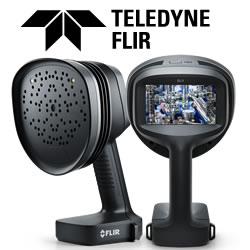New Tools for Human-Machine Collaborative Design
DARPA seeks innovative ideas for harnessing new materials and fabrication methods
Advanced materials are increasingly embodying counterintuitive properties, such as extreme strength and super lightness, while additive manufacturing and other new technologies are vastly improving the ability to fashion these novel materials into shapes that would previously have been extremely costly or even impossible to create. Generating new designs that fully exploit these properties, however, has proven extremely challenging. Conventional design technologies, representations, and algorithms are inherently constrained by outdated presumptions about material properties and manufacturing methods. As a result, todays design technologies are simply not able to bring to fruition the enormous level of physical detail and complexity made possible with cutting-edge manufacturing capabilities and materials.
To address this mismatch, DARPA today announced its TRAnsformative DESign (TRADES) program. TRADES is a fundamental research effort to develop new mathematics and algorithms that can more fully take advantage of the almost boundless design space that has been enabled by new materials and fabrication methods.
"The structural and functional complexities introduced by todays advanced materials and manufacturing methods have exceeded our capacity to simultaneously optimize all the variables involved," said Jan Vandenbrande, DARPA program manager. "We have reached the fundamental limits of what our computer-aided design tools and processes can handle, and need revolutionary new tools that can take requirements from a human designer and propose radically new concepts, shapes and structures that would likely never be conceived by even our best design programs today, much less by a human alone."
For example, designing a structure whose components vary significantly in their physical or functional properties, such as a phased array radar, and an aircraft skin, is extremely complicated using available tools. Usually the relevant components are designed separately and then they are joined. TRADES envisions coming up with more elegant and unified designs—in this case, perhaps embedding the radar directly into the vehicle skin itself—potentially reducing cost, size and weight of future military systems. Similarly, existing design tools cannot take full advantage of the unique properties and processing requirements of advanced materials, such as carbon fiber composites, which have their own shaping requirements. Not accounting for these requirements during design can lead to production difficulties and defects, and in extreme cases require manual hand layup. Such problems could be mitigated or even eliminated if designers had the tools to account for the characteristics and manufacturing and processing requirements of the advanced materials.
"Much of todays design is really re-design based on useful but very old ideas," Vandenbrande said. "The design for building aircraft fuselages today, for example, is based on a spar-and-rib concept that dates back to design ideas from four thousand years ago when ancient ships such as the Royal Barge of Khufu used this basic design concept for its hull. TRADES could revolutionize such well-worn designs."
DARPA is interested in receiving proposals with novel concepts to build future design tools from a diverse technical community beyond the classic computer-aided design and physical modeling communities. Examples of other communities of interest include animation, materials science, applied math, data analytics and artificial intelligence.
A Proposers Day has been scheduled for 13 May 2016, in Arlington, Virginia. Details are available here: http://go.usa.gov/cuYJp.
Image Caption: DARPAs TRAnsformative DESign (TRADES) program is a fundamental research effort to develop new mathematics and algorithms that can more fully take advantage of the almost boundless design space that has been enabled by new materials and fabrication methods.
Featured Product

